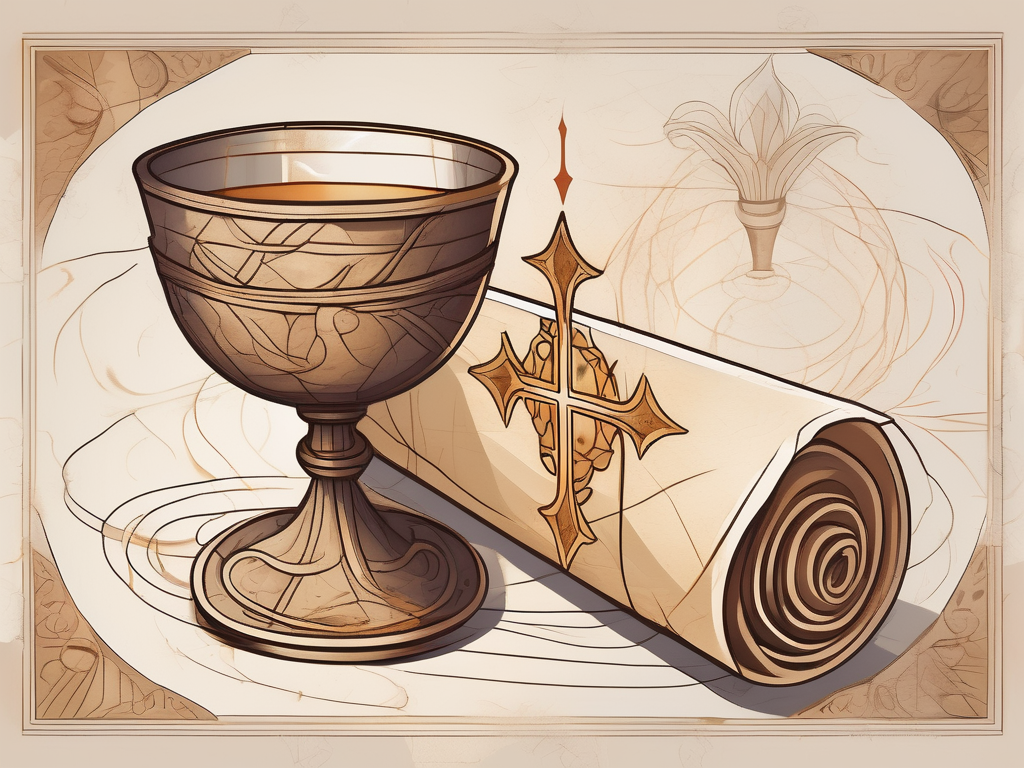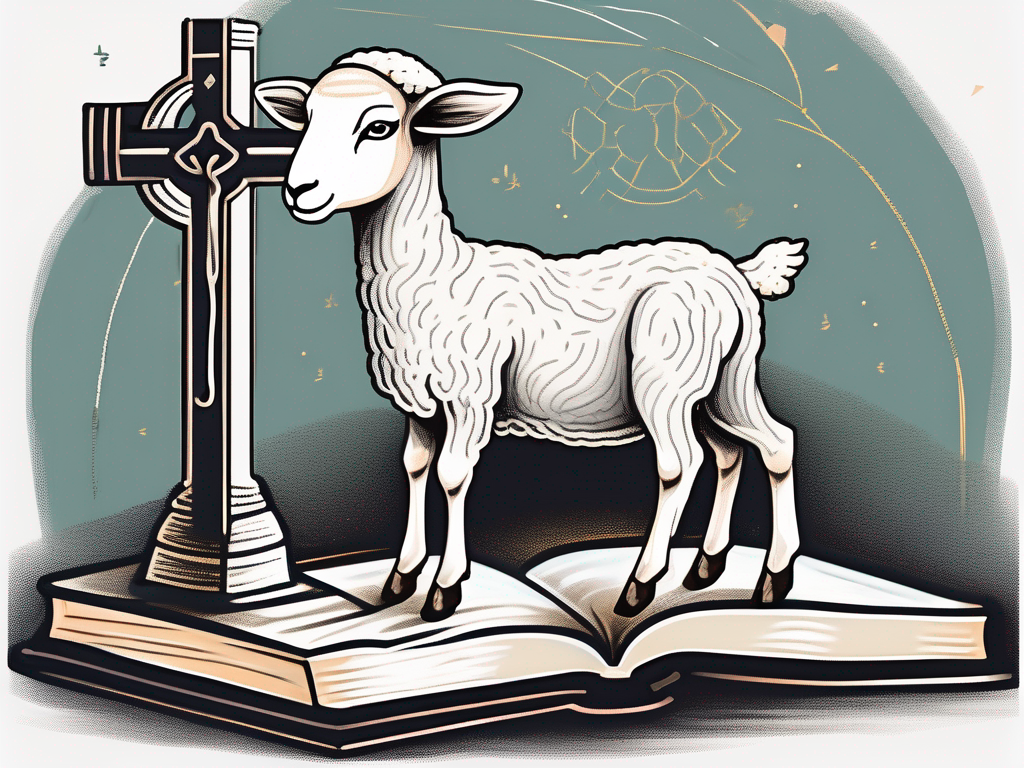In the vast tapestry of the Bible, numerous characters stand out for their significant contributions to the narrative. One such figure is Mary, the mother of Jesus. While her role may seem overshadowed by her divine son, a closer examination reveals the profound impact she had on the biblical story and its subsequent interpretations.
Understanding Mary’s Role in the Bible
Before delving into Mary’s specific role, it is crucial to recognize her presence in both the Old and New Testaments. By exploring her appearances in these distinct periods, a more comprehensive picture of her significance emerges.
Throughout history, Mary has been revered as a symbol of purity, devotion, and faith. Her story begins in the Old Testament, where she is not directly mentioned, but theologians and scholars have drawn connections between certain passages and the future role she would eventually play.
Mary in the Old Testament
While Mary is not directly mentioned in the Old Testament, there are intriguing hints that foreshadow her importance. One such example is found in the prophecy of Isaiah 7:14, where it speaks of a virgin conceiving a child whose name would be Immanuel, meaning “God with us.” Many interpret this as an early indication of Mary’s role in the eventual birth of Jesus.
Furthermore, Mary’s lineage can be traced back to King David, as mentioned in the genealogies found in the Old Testament. This connection to the royal line of David is significant, as it fulfills the Messianic prophecies that the Savior would come from the house of David.
Mary in the New Testament
In the New Testament, Mary’s importance is woven throughout the Gospels. Her pivotal role in the birth of Jesus is well-known, but her involvement does not end there. Mary witnesses Jesus’ ministry, stands by him during his crucifixion, and is present in the upper room during the outpouring of the Holy Spirit.
During Jesus’ ministry, Mary is seen as a devoted follower, supporting him in his mission. She is present at the wedding in Cana, where Jesus performs his first miracle, turning water into wine. This event not only showcases Jesus’ divine power but also highlights Mary’s intercessory role as she prompts Jesus to perform the miracle.
As Jesus hangs on the cross, Mary stands by his side, sharing in his suffering. It is during this moment that Jesus entrusts Mary to the care of the beloved disciple, John, symbolizing her role as the mother of all believers.
After Jesus’ ascension, Mary is present with the disciples in the upper room, where they receive the outpouring of the Holy Spirit on the day of Pentecost. Her presence in this significant event emphasizes her role as a witness to the birth of the Church and the beginning of the spread of the Gospel.
Throughout her life, Mary exemplifies unwavering faith and obedience to God’s will. Her “yes” to the angel Gabriel’s announcement of her role as the mother of Jesus demonstrates her humility and trust in God’s plan.
In conclusion, Mary’s role in the Bible extends beyond her well-known part in the birth of Jesus. She is a figure of great significance, both in the Old and New Testaments. From the prophecies that foreshadow her role to her unwavering support and faith, Mary’s presence enriches the biblical narrative and serves as an inspiration for believers throughout history.
Theological Perspectives on Mary
Over the centuries, theological interpretations of Mary’s role have varied among different branches of Christianity. These differing perspectives give rise to a rich tapestry of beliefs and practices concerning Mary. Let’s explore some of them.
Catholic Interpretations of Mary’s Role
In the Catholic tradition, Mary holds a prominent position. Believed to be immaculately conceived and perpetually a virgin, she is venerated as the Mother of God. Catholics honor Mary through devotion, prayers, and the recognition of her intercessory role.
Within Catholic theology, Mary’s role is seen as crucial in the salvation of humanity. She is viewed as the New Eve, who, through her obedience to God, undid the disobedience of the first Eve. This belief is rooted in the doctrine of the Immaculate Conception, which holds that Mary was conceived without original sin.
Furthermore, Catholics believe in Mary’s perpetual virginity, which means that she remained a virgin before, during, and after the birth of Jesus. This belief is based on the understanding that Mary’s primary role was to be the vessel through which God entered the world, and her perpetual virginity symbolizes her complete dedication to God.
Catholics also recognize Mary as the Queen of Heaven and Earth, as she is believed to have been assumed into heaven both body and soul. This belief, known as the Assumption, emphasizes Mary’s special status and her close relationship with Jesus.
Protestant Views on Mary
Protestant perspectives on Mary tend to focus on her as a faithful disciple and a model of faith rather than as an object of veneration. While Protestants generally uphold her as the mother of Jesus, they do not bestow upon her the same level of reverence as Catholics.
Protestants emphasize Mary’s role as a humble servant of God, who willingly accepted the task of giving birth to Jesus. They see her as an example of faith and obedience, highlighting her response to the angel Gabriel’s announcement of her pregnancy as a demonstration of trust in God’s plan.
However, Protestants reject the Catholic doctrines of the Immaculate Conception and the Assumption. They argue that these beliefs lack sufficient biblical support and are not essential to the core message of Christianity. Instead, Protestants focus on the centrality of Jesus’ life, death, and resurrection for salvation.
While Mary is respected and honored in Protestant traditions, her role is often seen as secondary to Jesus. She is viewed as an important figure in the Christmas story and a model of faith, but not as a mediator between God and humanity.
Mary’s Influence on Christian Worship
Through the ages, Mary’s influence has extended beyond theological debate and into the realm of Christian worship. Her presence is felt in both liturgical practices and artistic expressions.
One of the ways in which Mary’s influence is palpable in Christian worship is through the incorporation of prayers, hymns, and liturgical traditions dedicated to her. Devotional practices, such as the recitation of the Rosary, offer believers a way to connect with Mary’s intercession and seek her guidance in their spiritual journey. The Rosary, a prayer that combines the repetition of specific prayers with the contemplation of key events in the life of Jesus and Mary, has become a cherished tradition for many Catholics and other Christian denominations.
In addition to prayers, Mary’s influence is also evident in the hymns sung during worship services. Countless hymns have been composed throughout history that pay homage to Mary’s role as the mother of Jesus and her significance in the Christian faith. These hymns not only serve as a means of expressing devotion to Mary but also as a way to deepen the worship experience and foster a sense of connection with her.
Mary in Christian Art and Iconography
The visual representation of Mary has played a significant role in Christian art. From early iconography to Renaissance masterpieces, countless works depict Mary as a symbol of grace and purity. These artistic representations provide believers with a visual reminder of her presence and serve as a source of inspiration and contemplation.
Throughout history, artists have sought to capture the essence of Mary’s character and her relationship with Jesus through their artwork. The iconic image of Mary holding the baby Jesus, known as the Madonna and Child, has become one of the most recognizable and revered images in Christian art. This depiction not only emphasizes Mary’s role as the mother of Jesus but also highlights her nurturing and protective nature.
Furthermore, the use of symbolism in Mary’s artistic representations adds depth and meaning to the artwork. For example, the presence of a halo around Mary’s head signifies her holiness and divine connection. The color blue, often used in depictions of Mary’s clothing, symbolizes her purity and fidelity to God.
Artistic expressions of Mary also serve as a means of storytelling and teaching. Through the portrayal of key events in Mary’s life, such as the Annunciation or the Assumption, artists have the opportunity to convey important theological concepts and inspire contemplation among viewers. The beauty and intricacy of these artworks invite believers to reflect on Mary’s role in salvation history and her continued presence in the lives of believers today.
Feminist Readings of Mary in the Bible
As feminist theology emerged, scholars started reinterpreting Mary’s role in a new light. They sought to highlight her importance as a symbol of empowerment and challenge traditional patriarchal interpretations.
One aspect that feminist readings of Mary in the Bible often emphasize is her agency and autonomy. While traditionally portrayed as meek and submissive, feminist theologians argue that Mary’s actions and choices demonstrate her strength and independence. For example, when the angel Gabriel appeared to her and announced that she would conceive a child, Mary responded with curiosity and asked how this would be possible, rather than simply accepting the news without question.
In addition to her agency, Mary is also seen as a symbol of strength and virtue. Many feminists view her as a powerful figure who embodies these qualities. Her courage and unwavering faith in the face of adversity serve as an inspiration for women seeking liberation and empowerment within the context of Christianity.
Mary as a Symbol of Strength and Virtue
Many feminists see Mary as a powerful figure who embodies strength and virtue. Her courage and unwavering faith in the face of adversity serve as an inspiration for women seeking liberation and empowerment within the context of Christianity.
Furthermore, Mary’s resilience and determination are evident throughout her story. From the moment she learned of her unexpected pregnancy to the challenges she faced as the mother of Jesus, Mary demonstrated unwavering strength and unwavering faith. This portrayal challenges the traditional notion of women as passive and submissive, instead presenting Mary as a woman who actively engaged with her circumstances and made choices that shaped her own destiny.
Moreover, Mary’s role as the mother of Jesus is often interpreted as a testament to her strength and virtue. As the mother of the Messiah, she played a crucial role in the salvation of humanity. This elevated status positions her as a powerful figure who defies societal expectations and challenges the patriarchal norms of her time.
Mary’s Role in the Empowerment of Women in Christianity
Feminist theologians argue that Mary’s role extends beyond her own story to inspire and uplift women in their pursuit of equality within the Christian faith. By embracing Mary’s courage and resilience, women find strength and affirmation in their own spiritual journeys.
Furthermore, Mary’s story offers a counter-narrative to the dominant patriarchal interpretations within Christianity. Her unwavering faith and determination challenge the notion that women should be passive and submissive. Instead, Mary’s example encourages women to assert their agency and actively participate in shaping their own spiritual lives.
By reimagining Mary as a symbol of empowerment, feminist readings of the Bible seek to reclaim her story and reinterpret it in a way that resonates with the experiences and struggles of women today. Through this lens, Mary becomes not only a historical figure but also a source of inspiration and strength for women seeking to challenge and transform patriarchal structures within Christianity.
The Controversies Surrounding Mary’s Role
Despite her esteemed position, Mary’s role in Christian theology has also generated controversy and heated debates throughout history. Several topics remain points of contention among scholars and believers alike.
Debates on Mary’s Virginity
The perpetual virginity of Mary, a key tenet of Catholicism, is a topic that sparks dialogue and debate. While some argue that Mary retained her virginity before, during, and after Jesus’ birth, others interpret the biblical passages differently and propose alternative explanations.
The Assumption and Immaculate Conception Controversies
The Catholic dogmas of the Assumption and Immaculate Conception continue to be sources of discussion among theologians. These beliefs hold that Mary was bodily assumed into heaven and that she was preserved from original sin from the moment of her conception. While widely accepted in Catholicism, these doctrines are not universally embraced within other Christian traditions.
In conclusion, Mary’s role in Scripture goes beyond being the mother of Jesus. From her appearances in the Old and New Testaments to her influence on Christian worship and theologies, Mary remains a significant figure in the biblical narrative. As interpretations and perspectives continue to evolve, her importance will undoubtedly inspire discussions and contemplations for generations to come.












